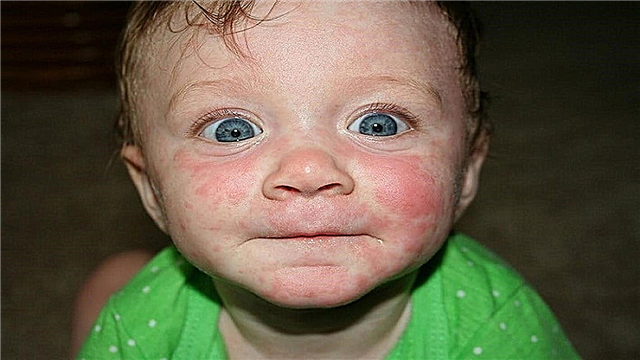Everyone has heard of such a serious disease as tuberculosis, but few have encountered it in life. Many moms and dads consider the risks of contracting this disease exaggerated, and the ailment far-fetched, therefore they refuse vaccination and diagnostic tests for their child.
In fact, preventing infection with a dangerous infection is one of the main tasks of public health; massive preventive measures are being taken in the country. In recent years, in addition to the usual Mantoux reaction, Diaskintest has been used to detect tuberculosis, which raises many questions from parents. To understand whether vaccinations and tests for tuberculosis are needed, it is necessary to understand the main ways to prevent infection.
About tuberculosis
Infection with a dangerous infection develops after the ingestion of mycobacteria, which are also called "tubercle bacillus", or Koch's bacillus. Under favorable conditions, the microorganism multiplies rapidly and most often affects the lungs of the patient. But sometimes the infection does not affect the respiratory system, but spreads to bones and joints, skin, nervous tissue and other organs.
The incidence of tuberculosis in Russia remains high, and the number of infected children has doubled over the past decade. About 2% of the total number of children in the population are registered annually at anti-tuberculosis dispensaries.
The course of the disease in children differs from the classic development of the disease. For children, small and uncomplicated forms of tuberculosis, lesions of the intrathoracic lymph nodes are more typical. Extrapulmonary manifestations do not exceed 10% of the total number of cases of infection.

Almost all adults are carriers of Mycobacterium tuberculosis, but only a small number of infected people develop the disease. For the reproduction of the tubercle bacillus, certain conditions are needed, one of which is reduced immunity. Among children under 14 years of age, the infection rate is, according to various sources, from 15 to 60%. Therefore, it is important to identify the first signs of a dangerous disease and take action in time.
About vaccines and diagnostic tests
- vaccination against tuberculosis.
BCG belongs to vaccines and is created on the basis of the "bovine" type of tuberculosis bacteria. The introduced microorganism, although it is alive, is weakened so much that the baby's immunity can easily cope with it. After vaccination, the child retains reliable protection, and the Mantoux test may become positive.
Vaccination is carried out for all newborns according to the calendar of preventive vaccinations on the 3rd - 7th day after birth. Repeated vaccine administrations are possible at the age of 7 and 14 years if the child has indications;
- Mantoux test and its meaning.
This test is performed using tuberculin, a special extract obtained from killed bacteria. This substance is an allergen and causes a response in carriers of mycobacteria and people vaccinated against tuberculosis. A positive Mantoux test result indicates an infection of the child, but this does not always mean that the disease has developed.
Despite its name, tuberculin itself does not contain bacteria, neither living nor dead.
- Diaskintest for tuberculosis, what is it?
The diagnostic test contains special proteins - antigens that trigger an immune response in the body when infected with mycobacterium. These substances are absent in the tuberculosis vaccine, therefore Diaskintest is considered more specific than the Mantoux reaction.
Due to its unique composition, Diaskintest reacts only to mycobacterium tuberculosis, without causing false positive reactions associated with the introduction of tuberculin during the Mantoux reaction.
It turns out that this test is more selective, and its positive result indicates the infection of the baby with a dangerous bacterium, the development of the disease. But why didn't Diasintest completely replace the Mantoux test? It turns out that, due to its specificity, the reaction itself cannot be used in the selection of children for repeated BCG vaccinations, but can serve as an addition to the intradermal tuberculin test.
The test effectively complements the Mantoux reaction, but cannot be used on its own. Both tests are of great importance in the diagnosis of tuberculosis and should be prescribed by a phthisiatrician. Only a doctor can determine which of the reactions the child needs to carry out, and correctly assess the result of the test.
General indications for Diaskintest
- identification of frolicking lung disease;
- assessment of the severity of tuberculosis;
Thanks to this method, it is possible not only to detect the ill-fated bacterium, but also to determine the degree of activity of the pathogen.
- differential diagnosis of the disease;
- the difference between post-vaccination allergy and an infectious process;
- identification of children at high risk of developing the disease;
- as part of a comprehensive assessment of the effectiveness of treatment.
Many parents consider Diaskintest to be a vaccine and are afraid of the complications of vaccination. In fact, the differences between vaccination and diagnostic testing are huge. During BCG vaccination, a weakened but living microorganism is introduced, which contributes to the development of immunity against tuberculosis. When conducting samples, the reaction to the injected substance is assessed, but no protection against disease is formed. Tests are done intradermally and adverse reactions are extremely rare.
How is Diaskintest carried out?
Before testing, the child must be consulted by a doctor. The test is identical to the Mantoux test. For this, tuberculin syringes and short needles are also used, and the injection itself is carried out intradermally.
The nurse draws 2 doses of the diagnostic agent into a syringe, one of which is released onto a sterile cotton swab. Thus, a more accurate dosage of the drug is achieved. Then the health worker determines the location of the sample - the middle third of the inner surface of the forearm. The baby's skin is treated with alcohol, after which 0.1 ml of Diaskintest is injected.
A papule in the form of a "lemon crust" of whitish color with a diameter of 7 - 10 mm appears at the injection site of the diagnostic substance.
The basis of the Diaskintest test is a specific allergic reaction, which makes it possible to identify the body's sensitivity to mycobacteria. Therefore, children who are prone to the appearance of any type of allergy are shown the use of desensitizing drugs before and after the test.

How to evaluate the reaction to Diaskintest?
To understand how the body responded to the drug administration, 72 hours after sample placement, the size of the seal is determined with a transparent ruler and the result is evaluated:
- Negative reaction.
After the prescribed time, no traces of the injection are detected on the child's skin. Formation of a small "prick reaction", up to 2 mm, is acceptable at the place of sample setting. The negative results of Diaskintest indicate the absence of mycobacteria in the child's body, which is the norm in children. The kid does not belong to the risk group for developing tuberculosis.
- Questionable reaction.
Sometimes redness forms at the injection site, but there is no pronounced tissue compaction. This indicates the need for additional examination of the child, and other diagnostic methods.
- Positive reaction.
If a seal has formed on the child's skin, a papule of any size, we can talk about a positive test result. The larger the element value, the more pronounced the reaction is considered.
If a baby has a positive Diaskintest reaction, parents should not despair. Although the test is considered highly informative, there are still cases of false positive test results. In any case, the final diagnosis and the need for treatment are determined by the doctor after additional examination methods.
Contraindications to Diaskintest
But it is not always possible to carry out a diagnostic test. Like any drug Diaskintest has its own contraindications for use:
- infectious, atopic and malignant skin diseases;
- allergic diseases in the acute stage;
- exacerbation of chronic diseases or acute signs of an illness;
- epilepsy;
- infectious diseases (a test is possible only a month after the patient's clinical recovery);
- the test is contraindicated if less than a month has passed since the last vaccination.
Adverse reactions to Diaskintest
The test is well tolerated by children, and unwanted reactions occur in very rare cases. Of the possible negative manifestations, the manufacturer of the drug indicates headache, weakness, increased body temperature. In some cases, a hematoma forms at the injection site. A bruise interferes with the assessment of test results and increases the risk of diagnostic errors. The formation of a hematoma is usually associated with improper sample placement.

Frequently Asked Doctor Questions
Since Diaskintest is used relatively recently, the parents of young patients have many questions about the diagnostic test. Let's consider the most common ones:
- At what age is it allowed to carry out Diaskintest?
The manufacturer notes the possibility of using an intradermal test in all age groups, indicates the absence of any age restrictions.
According to the clinical guidelines of Russian health care, all babies from one to seven years old are recommended to conduct an annual Mantoux test. In the absence of BCG vaccination in a child, a diagnostic test is carried out 2 times a year, starting from 6 months, until the moment of vaccination against tuberculosis.
If a baby under 7 years old has a positive reaction to the Mantoux test, the phthisiatrician may recommend an additional setting of Diaskintest. After the child reaches the age of 8 years and up to 17, Diaskintest is shown every year.
- Can both diagnostic tests be done on the same day?
If the phthisiatrician doubts the reliability of the Mantoux test, the doctor may recommend doing both reactions. Experts allow the simultaneous execution of the Mantoux and Diaskintest test, provided that the tests are performed on different hands.
- Is it dangerous for water to enter the sample location?
Everyone has heard that it is not worth wetting the Mantoux sample, but what about Diaskintest? Although water, in most cases, does not have any negative effect and does not affect the results of both samples, it is still worth being careful.
Swimming in the pool, actively washing hands with detergents, using a patch can cause irritation and itching, and then - nonspecific allergies. In this case, it will not be possible to correctly assess the result. Therefore, doctors recommend that parents be attentive to children, do not allow scratching the injection site and do not use products that cause irritation and allergies.
- Is it possible to combine the Diaskintest test and vaccinations?
The diagnostic test must be assessed before the next vaccination is administered, therefore it is better to first diagnose and then vaccinate according to the calendar. In case the baby was recently vaccinated, the diagnosis of tuberculosis should be postponed for a month. After this period, it is worthwhile to conduct a Diaskintest, then its results will be reliable.

- What if it's time to do the test and the baby is sick?
If the child has signs of SARS, it is recommended to postpone the test until the baby is fully recovered. In the event of an exacerbation of a chronic disease in a crumbs, you should first take care of the child's health, and then use Diaskintest.
If the child is prone to allergic reactions, you need to prepare in advance for the test - give the baby desensitizing drugs 5 days before the test and 2 days after it. If a child is registered with an allergist, for example, with bronchial asthma, it is imperative to consult a doctor before diagnosing.
- Is it allowed to test the child in the clinic if the kindergarten is closed for quarantine?
If an infectious disease is detected in a preschool institution, quarantine measures are taken. Even if the baby looks healthy, you need to wait until the end of the forced break and then conduct a test.
- Should you stick to a diet while diagnosing tuberculosis?
The manufacturer of the drug does not indicate the need to limit any products when administering Diaskintest. Doctors advise against eating food that can provoke allergic reactions in a child. Any contact with potentially hazardous substances must be avoided, not only in products, but also in the environment. This is especially true for children prone to manifestations of hypersensitivity.
- Is it safe to use Diaskintest in children's practice?
In the case of correct administration of the drug, adherence to the correct dosage, the sample does not have a negative effect on the health of the baby. Parents should understand that Diaskintest, like any antigen, can cause general reactions in the form of weakness, headache, and fever. But such manifestations occur in rare cases and do not cause harm to the body.
- What should be the test result in a healthy person?
The reaction to Diaskintest should be negative, regardless of the age and the fact of the child's immunization. With Mantoux, things are different - in a baby who has not yet been vaccinated with BCG, the tuberculin test must be negative. After vaccination, the reaction becomes weakly positive or positive, which indicates the formation of immunity against tuberculosis.

An increase in papules from the Mantoux test can occur immediately after BCG and is considered a post-vaccination reaction. If several years have passed after the vaccination, and the test result has changed dramatically, the baby needs additional examination, testing and chest X-ray.
- Is it possible to prescribe preventive treatment against tuberculosis on the basis of diagnostic tests?
With the advent of a new diagnostic test, the number of unnecessarily prescribed treatment decreased. Children with a positive Mantoux test and a negative Diaskintest are absolutely healthy, and their immunity is working.
The massive use of anti-tuberculosis drugs leads to an increase in the resistance of mycobacteria and the development of especially dangerous forms of the disease. Preventive treatment should be prescribed by a phthisiatrician after a thorough laboratory and instrumental examination of the child.
Conclusion
Much attention is paid to the prevention of tuberculosis in our country. And it is not surprising, because the disease is much easier to prevent, and in case of infection, proper treatment must be prescribed in time. Therefore, all babies are vaccinated with BCG and diagnostic tests.
The use of a new type of diagnosis - Diaskintest allows you to more accurately identify the disease. This method is quite specific, and its reliability is close to 100%, which helps to identify tuberculosis in the early stages and to understand the need for treatment of an infectious disease.Understanding the importance of diagnostic tests and vaccination, knowing what Diaskintest, vaccinations are, parents will be able to protect their child from such a dangerous disease as tuberculosis.



